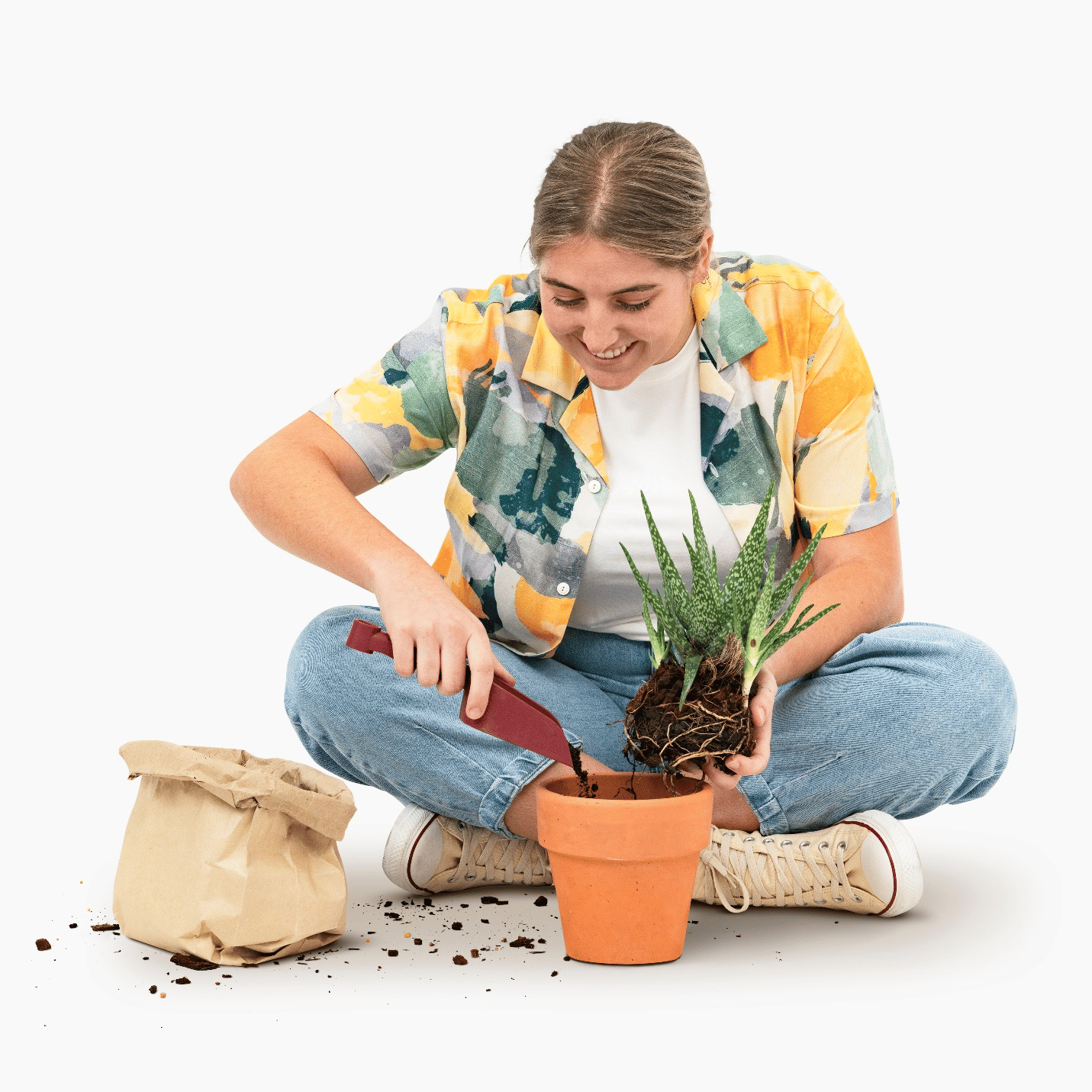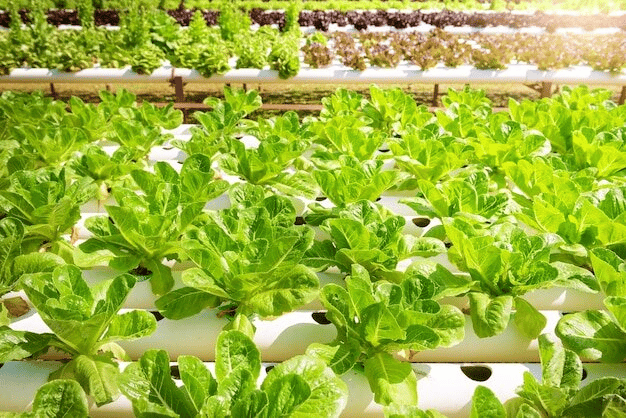

If you are wondering how to pot indoor plants, this article is for you. It covers all aspects of houseplant potting and repotting. The best part? It is a beginner-friendly guide, so you don’t have to be an avid houseplant grower.
Let’s dig in!
As a beginner, potting your indoor plants the right way might be daunting. This section shows you how you pot or repot your plants without killing them. But first, let’s look at the things you’ll need.
1. Remove the houseplant from the pot
Generally, new plants come in large plastic containers, allowing the plant to grow uninterrupted. However, you don’t want to keep it in the container for long. Chances are the soil is nutrient-deficient, and the plant will soon outgrow it.
Besides, the cheap plastic containers are not pleasing to the eye. While plants will often pop out of the container easily, you can use scissors to cut the container if it’s hard to get them out.
Furthermore, it is just a cheap plastic container.
By cutting the container, you also maintain the shape of the rootball, ensuring the roots stay intact. As you’d guess, most plants will have outgrown the container before adoption.
2. Trim the rootball
After removing the plant, it’s time to loosen and trim the rootball. Loosening the rootball allows air circulation and removal of overgrown roots. You can use your hands – but ensure to have gloves on you – to trim the rootball.
Alternatively, you can use sharp scissors. While doing so, leave the thick roots at the foliage’s base. If the roots have grown in tight circles, unbind them as much as possible.
If repotting your houseplant, you must remove at least a third of the old mix. It is because the plant has used some of the nutrients. As such, you’ll need to add fresh potting mix. Ensure the planter has drainage holes to prevent the roots from rotting.
If the pot has no drainage hole, you can drill one or layer the bottom with lava rocks, gravel, or rocks. The goal is to ensure optimal water drainage and retention of crucial nutrients.
So how do you choose the right potting mix? Let’s find out.
Where you’ll plant your houseplant will also determine the type of potting mix to use. Houseplants in shaded areas will require a light mix, while those in direct sunlight will need a medium-weight potting mix. If you are always on the move, you can opt for a mix with water-absorbing granules that hold and release water at different intervals.
As you’d expect, plants will require various nutrients that are not always available in organic soils. Organic soils are eco-friendly, containing natural elements such as worms, decaying plants, and microorganisms.
The conventional potting mix contains added nutrients such as black hummus and manure. Some also come with synthetic fertilizers to boost nutrient density.
Some plants need repotting at the beginning of every season, while others can sit in the same soil for several seasons. Conventional soil is the most appropriate if your houseplants require fresh soil every season.
They last for one growing season and can be disposed of after that. You can recycle organic soil or even add eco-friendly material, replenishing it with nutrients.
4. Add your plant
Add the houseplant to the fresh potting mix, ensuring it is centered. Finally, add more fresh soil around the plant until it is secure. Do not pack too much potting mix since it might inhibit the roots from breathing.
5. Water
Ensure to give your plant a good watering and leave it for a week. Often, new houseplants will wilt as they acclimatize. So, this should not be a cause for alarm.

Using a cache pot and saucer
This method requires a decorative pot, saucer, and planter. Place the saucer in the decorative pot and put the planter on top of the saucer. If you need the plant to appear taller, you can place hydro granules or pebbles at the bottom of the planter.
If you want to water the houseplant, you can take it out of the decorative pot, water it and drain the excess water into a sink. Alternatively, you can moisturize in the decorative pot since the saucer traps excess water.
Using a decorative pot and pot liner
For this method, you will require the following:
If you find it daunting to take the plant out of the decorative pot when it needs watering, then you can use a pot liner and a drainage material. Pot liners are made of plastic and come in different sizes, allowing them to fit in different decorative pots.
Furthermore, they prevent excess water from damaging the decorative pot. You can also trim them to the most appropriate size. They are ideal for taller plants or in situations where you want to raise the houseplant’s height.
First, you need to fill the base of the decorative pot with packing material and then place the liner on top. Second, put a drainage layer, such as small pebbles or hydro granules, at the base of the pot liner.
Hydro granules absorb excess water, so you don’t need to empty them often. Finally, place the planter on top of the drainage material. For improved stability, you can add pebbles around the grow pot. If your houseplant requires excess watering, you’ll need to replace the drainage material often.

● Hydroculture
For this method, you will require the following:
Hydroculture is one of the most preferred planting methods by professional interior designers. It uses hydro granules rather than soil. The hydro granules, made of clay, hold water and nutrients, allowing them to pass to the plant gradually.
As such, it mitigates pests, over/underwatering, and mess. The hydro granules at the base of the grow pot and liner trap and hold water and nutrients, allowing them to pass back to the plant.
This method ensures the plant’s roots have optimal moisture, air, and nutrient environments. As such, the plant will be healthier and more robust compared to those in conventional pots.
The best part is that you can plant two different houseplants in one decorative pot since they will take up only what each need.
Finally, hold your plant upright and press it firmly into the new pot. Add a layer of fresh soil around the plant until it is secure. Finally, water to allow it to settle.
